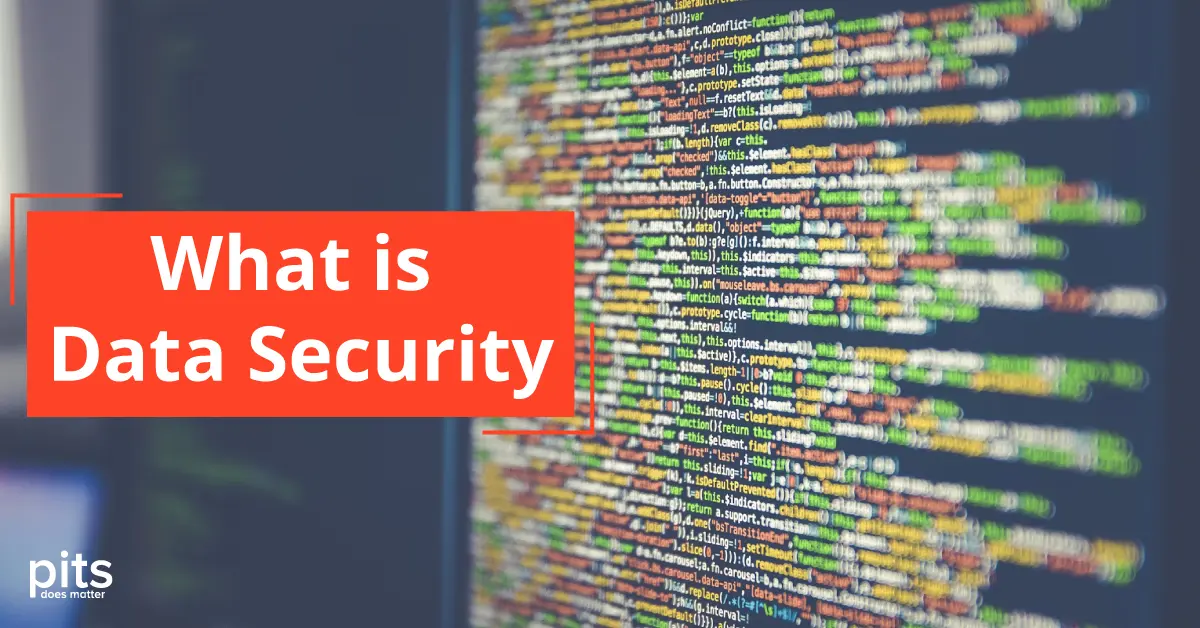What is Data Security? Data security safeguards digital information from unauthorized access, theft, or corruption. It plays a crucial role in IT, ensuring data confidentiality, integrity, and availability. With the rise of sophisticated cyber threats, individuals and organizations must take steps to protect their data. Depending solely on antivirus software or strong passwords is insufficient; you need a comprehensive approach to ensure data safety. PITS Global Data Recovery, a respected leader in storage device data recovery, understands the importance of a robust security strategy. We provide valuable guidance to safeguard your precious data.
Importance of Data Security
The importance of data security cannot be understated; it operates as the basis for establishing trust and confidence in any business environment. Businesses prioritizing data security protect their proprietary and customer data from unauthorized access and are committed to responsible data management. This commitment helps them gain a competitive edge, fosters customer loyalty, and ensures compliance with regulatory norms, amplifying their reputation and growth potential.
Steps for Ensuring High Levels of Data Security
To provide the highest levels of data security, here are some vital steps that individuals and organizations can take:
Preserving confidentiality: Numerous enterprises store vast quantities of sensitive data, including customer information, financial records, and proprietary knowledge. Safeguarding this information is crucial for upholding privacy and preventing unauthorized disclosure.
Building customer trust: Organizations are expected to manage personal data responsibly. Breaches in data compromise trust and loyalty, which can result in a damaged reputation and business loss. By prioritizing data security, companies can showcase their dedication to customers and build trust.
Complying with regulations: Global regulations like the General Data Protection Regulation (GDPR) legally require businesses to safeguard data, highlighting the critical nature of data security.

On a personal level, robust data security measures help shield individuals from identity theft and fraud. Hence, data security is fundamental in maintaining privacy, upholding identity, and supporting economic growth in the Internet era.
Avoiding financial losses: Cybersecurity breaches can lead to significant financial losses. These can include expenses related to managing the breach, carrying out forensic investigations, notifying affected individuals, and preparing for legal proceedings. Additionally, businesses may suffer financial setbacks due to disruptions in operations or the loss of customers after an incident occurs.
Regular Backups: Regularly back up your data to protect yourself from events like data loss or computer failure. Keeping your backup copy in a safe, physical location is recommended.
Data Security Strategies
Data security strategies are comprehensive plans to safeguard an organization’s digital assets against unauthorized access, data corruption, and theft. They refer to the protocols, tools, and practices implemented by an organization to protect its digital information. Together, these strategies form a robust defense against the ever-evolving cyber threats we face today.
Implementing data security strategies requires a series of well-planned steps that focus on protecting information from unauthorized access, corruption, and theft. Here’s a data security strategy step-by-step guide to help you protect your data:

- Identify Sensitive Data: The first step is to categorize your data and identify which data requires the highest level of security. It typically includes personal client information, financial records, and proprietary company information.
- Encrypt Your Data: Encryption is a critical strategy in securing your data. It transforms your data into an unreadable format, only accessible with a decryption key. Ensure that your stored data (data at rest) and data transmitted (data in transit) are encrypted.
- Implement Multi-Factor Authentication (MFA): MFA adds a layer of security by requiring more than one form of verification to access data. It could mean a combination of a password, a fingerprint, or a one-time code.
- Conduct Regular Security Audits: Regular security audits help identify potential vulnerabilities in your system. These audits should assess all areas, from physical security to network and application security.
- Educate and Train Employees: It’s essential to teach your employees about potential cyber threats and how to handle them. Regular training sessions help your team understand the importance of data security and how to practice safe behaviors.
How to Keep Data Safe and Secure
How to Keep Data Safe and Secure? is a question reverberating through the digital landscape in this era of cyber threats and data breaches. Understanding the importance of safeguarding our digital data is essential. The consequences of data security breaches, such as identity theft, financial failure, and damage to reputation, can be devastating.
Keeping data safe and secure requires a multi-faceted approach. It encompasses technological safeguards such as data encryption, antivirus software, firewalls, and human elements like staff education on certain data handling practices. It’s crucial to update and patch systems regularly to protect against the latest cyber threats.
How to Protect Data - Steps
Knowing how to protect your data is optional but a crucial skill everyone must possess to safeguard their personal and professional information from cyber threats. Data security has several primary objectives, which encompass:
- Ensuring the confidentiality of stored data is crucial, limiting access to authorized individuals or parties. Organizations must comply with regulations to protect customer or client data and maintain confidentiality.
2. Data integrity is another vital aspect of effective data management. It ensures accurate and consistent data throughout its lifecycle, reducing the risk of unauthorized edits, errors, or tampering.
3. Availability is necessary to ensure important data is accessible to authorized individuals or parties whenever required. It promotes business continuity and operational efficiency by providing data availability.

4. Authenticity is crucial in verifying the origin and validity of data. Confirming that the data comes from a trustworthy source is essential, preventing alteration or falsification during transmission or storage.
Knowing how to protect data is not merely a choice but an essential skill that individuals must possess to safeguard their personal and professional information from cyber threats.
When Data Security Strategies Fail: Steps to Take
A comprehensive and integrated data security strategy that includes ongoing training and updates is crucial for safeguarding sensitive data against unauthorized access. Organizations can effectively prevent major data breaches and cyberattacks by implementing these measures and staying alert to emerging threats.
In a disaster, PITS Global Data Recovery possesses the necessary knowledge and skills to recover lost data from any storage device, regardless of the manufacturer, operating system, or file type. Our professional team can assist you in minimizing the impact and mitigating losses resulting from a data breach.
Frequently Asked Questions
What is data protection and security?
Data protection and security involve implementing measures to safeguard information from breaches, theft, or loss. Organizations utilize encryption, authentication, audits, training, incident response, and backups to ensure data confidentiality, integrity, availability, and authenticity.
What is a data security risk?
Data security risk involves potential threats to data integrity, confidentiality, availability, and authenticity. Data can be subject to unauthorized access, disclosure, modification, or removal, resulting from cyber-attacks, human mistakes, system malfunctions, or natural calamities. The results can be severe, including financial losses, reputation damage, and legal implications.
How do you secure data?
Securing data requires a multi-layered approach, combining technical measures like encryption, backups, antivirus software, and firewalls with human elements like strong password policies and staff education. An up-to-date incident response plan is also crucial to minimize damage in a breach.
How can I keep my data safe and secure online?
Ensure optimal security by adhering to these best practices: regularly update software, employ robust passwords, enable multi-factor authentication, exercise caution with unfamiliar emails and links, regularly back up critical data, and utilize a trusted security suite.
What is a data security technique?
Data security techniques encompass a range of methods and protocols to safeguard digital data from unauthorized access, corruption, or theft. These techniques are classified into physical, technical, and administrative measures. Physical measures involve securing premises and devices, while technical measures use firewalls, encryption, and secure networks. Organizational measures include policies, user access controls, and staff training. The choice of security techniques depends on the data’s nature, risks, and regulatory obligations.
